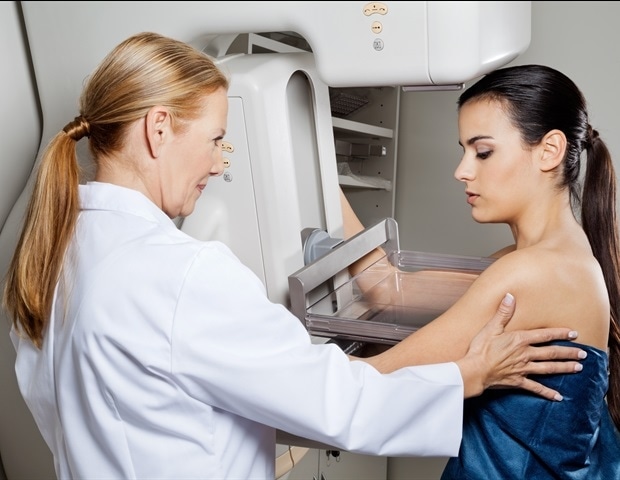Lene Andersen, MSW, has lived with rheumatoid arthritis and disability since childhood. Her personal experience of limited mobility and the struggle to access mammograms in Toronto, Ontario, fueled her determination to make a change. Her story will be featured in a special issue of Elsevier’s Journal of Medical Imaging and Radiation Sciences on Specialty Populations.
In this personal story, advocate and accessibility consultant Lene teams up with Natasha Batchelor, MHSc, MRT(R), a medical imaging technologist in York Region, Ontario, who is an expert on creating accessible mammography environments. Together, the two publish a call for a national response to remove barriers to breast cancer screening. They blend their personal and professional knowledge to offer valuable insights on building inclusive environments and practices.
In this story, Renee outlines her experience as a wheelchair user with limited mobility in her arms and shoulders, which makes it quite difficult for her to access mammograms. Despite having a breast lump for decades, she was unable to access a mammogram due to the lack of available equipment and procedures. She also highlights the challenges she faces due to her limited mobility as a wheelchair user, from contorting her body in uncomfortable positions for an ultrasound to triggering severe asthma attacks due to the lack of fragrance-free gel.
Looking back on her journey, Rene emphasized, “The shock of learning that I had not been considered, or deliberately excluded, from the breast cancer prevention system is something that still resonates in my life and made me aware of the many ways in which health care fails to meet the needs and protect the lives of patients with disabilities.”
She further stated, “…with a lack of recent research, documentation and accessibility guides, mammography clinics lack the guidance and standards to remove barriers and make this important screening test inclusive for people of all abilities. This has resulted in a patchwork approach to accessibility that relies on the perceptions of each clinic and its staff to identify gaps in equity. And a guesswork approach to accessibility can result in inadequate solutions and removal of barriers. It is reasonable to expect that this will have a direct impact on early detection and survival rates for patients with disabilities.”
Natasha Batchelor, Mammography and Breast Imaging Navigator/Supervisor, has dedicated her career to improving the imaging experience for patients with disabilities. She knows firsthand the challenges people with disabilities face and has developed strategies and resources to address their unique needs. Natasha’s commitment to creating an inclusive environment for patients with disabilities has led to the creation of webinars and resource materials, providing valuable training to her fellow technicians and medical professionals.
Together, the authors outline a three-pronged approach to address physical, social, and procedural barriers. The article outlines many common physical barriers, such as standing-only check-in counters, cramped mammography rooms with no space for mobility aids, and paperwork that must be written by hand. Key considerations for removing physical barriers include accessibility features such as adjustable equipment, accessible changing rooms, and fragrance-free policies. To address social barriers, such as health care provider biases, attitudes, and behaviors, the authors highlight the need for comprehensive training and resources. Procedural barriers refer to reception/admission procedures and appointment coordination, and the authors outline recommendations for improving these processes. By implementing the measures proposed in this call to action, health care systems can ensure that patients with disabilities have equal access to important breast cancer screening services.
The authors emphasize the need for meaningful consultation with people with disabilities (“nothing about us without us”) and the involvement of accessibility professionals in the analysis of existing barriers and the development of solutions. Recognizing the financial constraints faced by some regions, they urge professional associations and clinics to come together and advocate for funding to remove structural barriers. At the same time, they highlight that clinics and technicians can take immediate steps, such as awareness campaigns, accessibility training and equipment adaptations, to improve accessibility and accommodate patients with disabilities.
Creating an inclusive environment for patients with disabilities requires collaboration between governments, health systems, imaging associations, and individual clinics. The authors emphasize the importance of an equity-based, patient-centered approach to health care and urge stakeholders to prioritize the needs and experiences of people with disabilities. By addressing the identified barriers and implementing the recommended considerations, health systems can work to eliminate inequities in breast cancer screening and ensure health equity for people with disabilities.
sauce:
Journal References:
Andersen, L & Batchelor, N., (2023). Making Mammography Inclusive for Patients with Disabilities. Journal of Medical Imaging and Radiological Sciences. doi.org/10.1016/j.jmir.2023.08.003.

